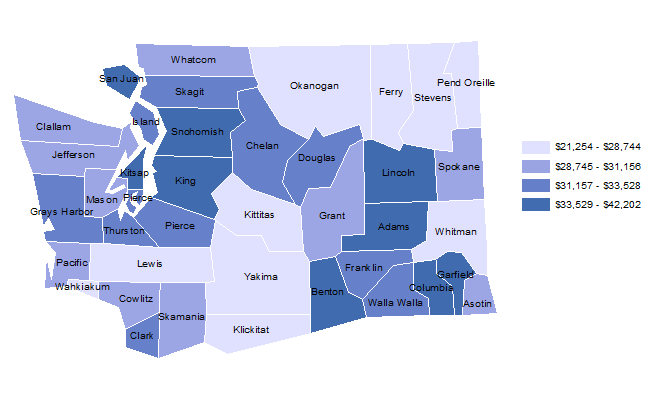Other pages about the topic: Forecasting & Research
Per Capita Personal Income, 1980
Inflation-Adjusted to 2022 Dollars

Manufacturing employment as a percent of total, 1980

- State average: 17.8%
- Highest county: Wahkiakum at 37.5%
- Lowest county: Whitman at 1.6%
return to top
2023-2025
Budget
Driver |
Projected
Change |
Budget
Share* |
Juvenile
Rehabilitation
(Ages 12-17) |
1.0% |
0.4% |
Corrections
(Males Ages 18-39) |
0.6% |
4.5% |
This report is prepared pursuant to Section 708 of Third Engrossed Substitute House Bill 2127 (Sec. 708 3ESHB 2127). The overall objective of this study is to provide information on the distribution of income, wealth and taxes across Washington households as well as changes in the distribution of income, and wealth over time.
The 2012 Washington State Input-Output model is a 52-sector model of the state economy using the North American Industrial Classification System definition of industries. The Model contains six final demand categories and provides estimates of payments of labor income, other value added and purchases by Washington industries from elsewhere in the United States and from foreign countries.
An asterisk (*) denotes that the race/ethnic group does not meet the minimum population threshold of 100 persons at the state level.
The most common tables are highlighted in bold.
Pages